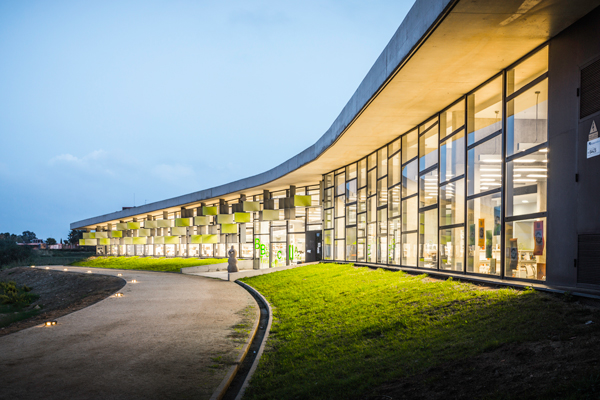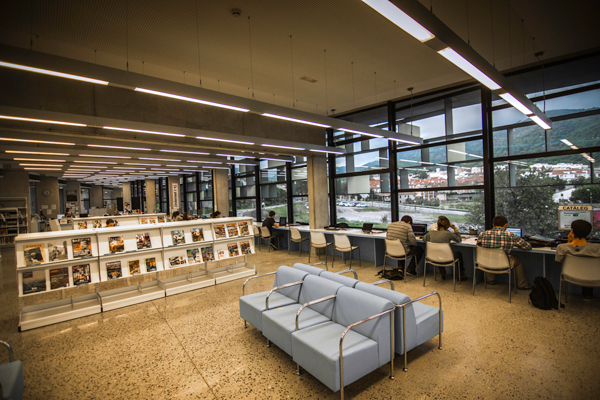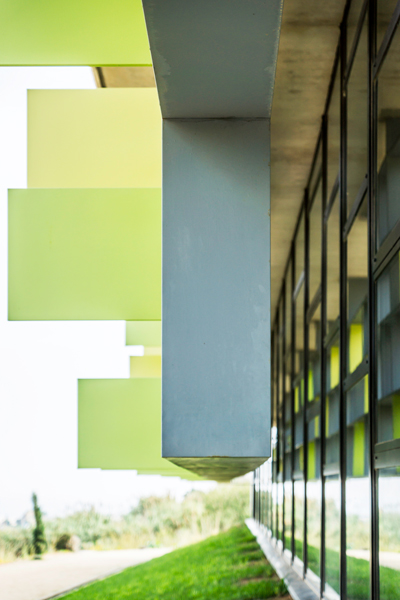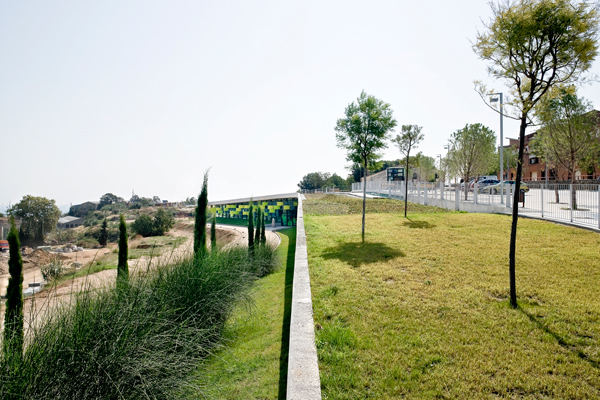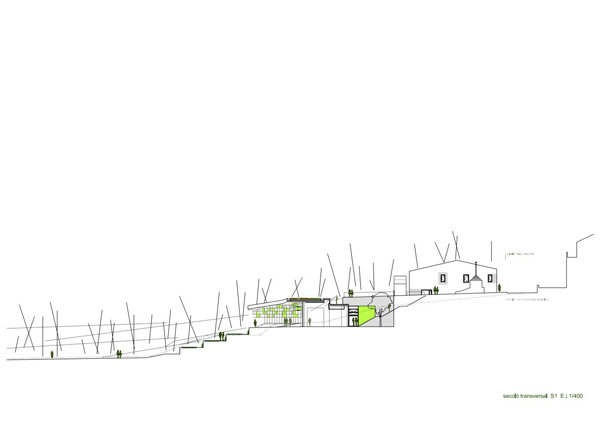2000 years ago, the Romans terraced a hillside just north of Barcelona to grow grapes. Those formations still exist in the sleepy town of Teià and were the first place Berta Barrio and her husband and collaborator Josep Peraire took me to on our visit to her project, the small public library Biblioteca de Can Llaurador. The gesture of the terraced slopes and the green-roofed library are immediately apparent. The building yawns out of the landscape, gently funneling in passersby to a womb of knowledge.
Inspired by a bookshelf, the eastward light shelves cut the morning glare while giving the entrance an engaging presence. But the library’s design intention is not to be secluded in a place to be lost in a book. The library turns and faces out to the town, to capture the weather, light, landscape, buildings, and movement of people. The crossing paths and the library’s embedded setting encourage people to congregate. Visitors are summoned by the tall windows to feed on the view while taking a break from their reading. The library itself is about telling the story of the town, including the restoration of the oldest standing farmhouse just above. But that story is still not complete as the rooftop path, illuminated at night by the interior lights shining through the skylights, ends abruptly, and a rough dirt lot below waits for the vision to be realized.
Architect Berta Barrio: “The reason for the structure in front is because the orientation is to the east, where you have sun in the morning. Since the sun in the morning is really low, we need this brise-soleil to keep the library cool. Here the problem is the heat in summer. This is the first time we used this kind of brise soleil; it is very aggressive because of that eastern orientation. When we designed it we thought we would make something that reminds you of a bookshelf, with green books (laughs).
But the design is not only to block the sun. I did not want people to sit in the back of the building; I wanted them to be in the front connected with the town visually. The problem is when you have a table that is only 70 millimeters high, then you have 4 meters of glass—I thought this would not feel very comfortable. So with this element in the facade, when you’re sitting down at the table you feel protected; it improves the scale of the space but does not block the view.”
Excerpt from [ours] Hyperlocalization of Architecture chapter Spain Wraps, an eVolo Press book about worldwide contemporary sustainable archetypes.

